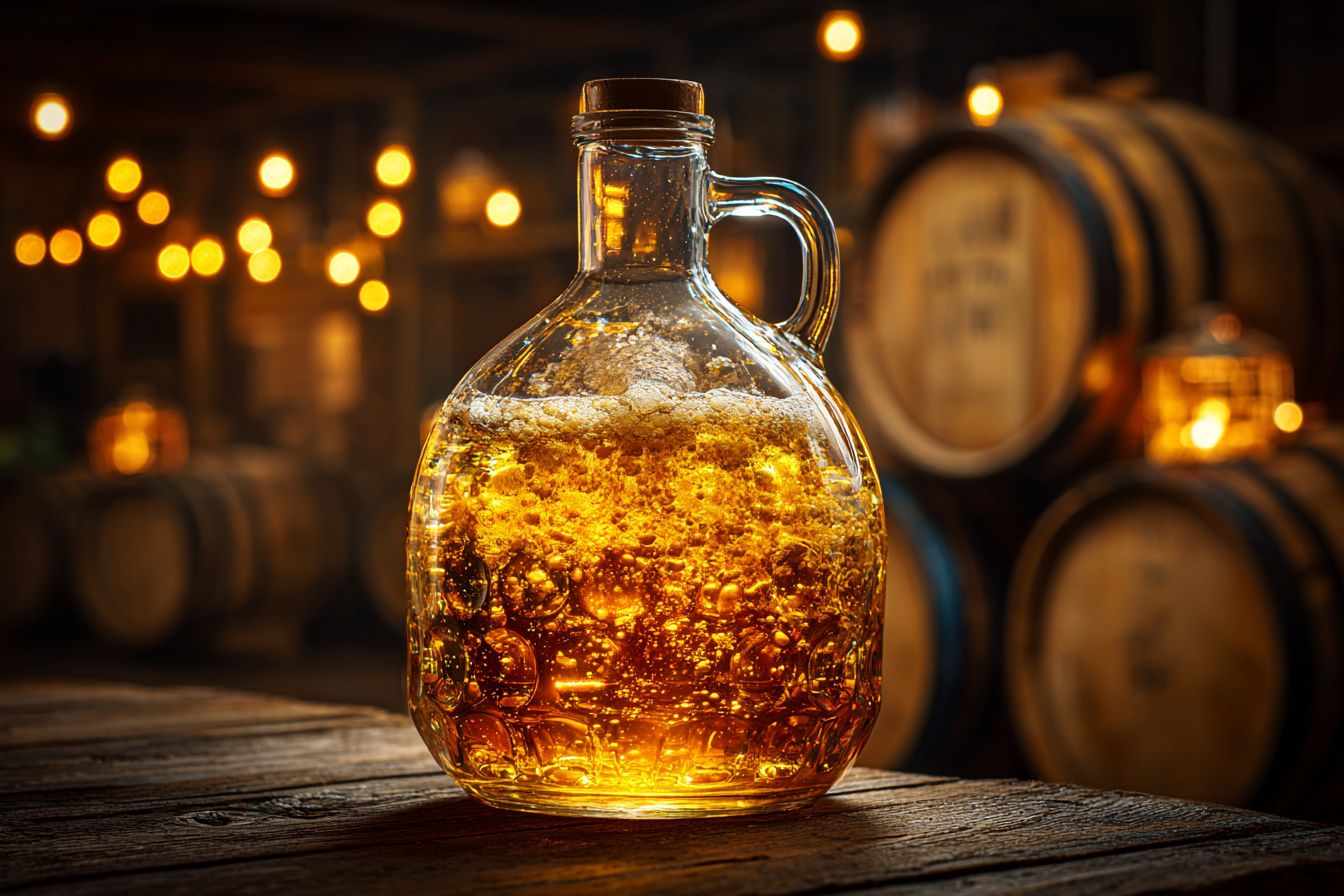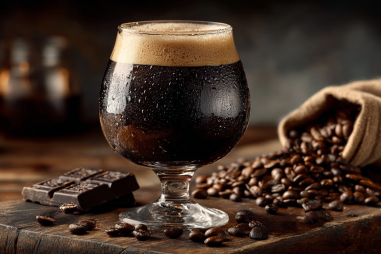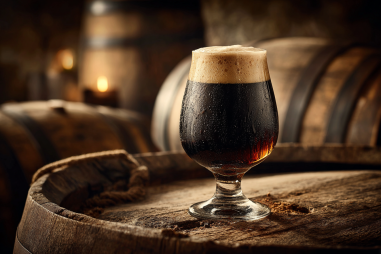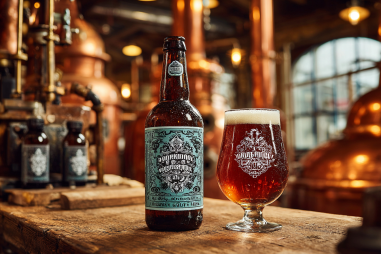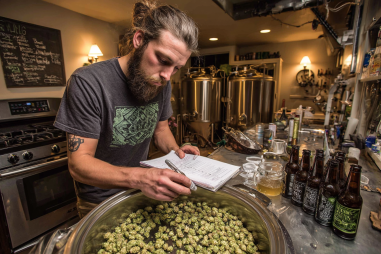American wild beer is a fascinating and increasingly popular style that captivates beer enthusiasts with its complex flavors and intriguing aromas. Unlike traditional beers brewed with carefully selected strains of brewer’s yeast, American wild beers rely on an eclectic mix of wild yeasts and bacteria, resulting in a fermentation process that is both unpredictable and rewarding. In this article, we dive deep into the fermentation journey behind American wild beers, exploring the key microorganisms involved, the stages and nuances of fermentation, and how environmental elements and aging techniques shape their distinctive character.
Introduction to Fermentation in Wild Beers
Fermentation is the heart and soul of brewing, the magical biochemical transformation that turns sugary wort into beer. For American wild beers, this process is distinctly different from conventional ales or lagers. Instead of relying solely on the domesticated Saccharomyces cerevisiae yeast, brewers incorporate—or allow natural inoculations of—wild yeast strains and bacteria that contribute unique and complex flavors. The result is a beer that often exhibits funk, tartness, earthiness, and layers of complexity not typically found in standard beer styles.
What makes the fermentation process in American wild beers so captivating is its unpredictability and the interaction of multiple microbial species that work at different times, producing a range of organic acids, esters, and phenols that evolve throughout the aging process. Let’s dig deeper into who these microbial players are.
Wild Yeast and Bacteria Species Involved
American wild beer relies on a consortium of wild yeasts and bacteria rather than a single pure yeast strain. The primary organisms frequently involved include:
- Brettanomyces: Often referred to as “Brett,” this wild yeast is the star player in wild beer fermentation. Brett is known for its ability to produce funky, earthy, and sometimes leathery flavors. It ferments slowly and can metabolize complex sugars that traditional brewer’s yeast cannot, contributing to dryness and complexity over time.
- Lactobacillus: A genus of bacteria famous for producing lactic acid, Lactobacillus creates the sour character often associated with wild beers. This bacterium can act quickly, sometimes even before Brett has fully taken hold, initiating an early sourness.
- Pediococcus: Another lactic acid bacteria that contributes to sourness, Pediococcus also creates buttery or diacetyl notes during fermentation. While sometimes undesirable, these flavors can mellow with aging to add complexity.
- Other Wild Yeasts: Besides Brettanomyces, other wild yeasts such as Candida, Hanseniaspora, and various minor strains can contribute aroma and flavor complexity, though they tend to play a more subtle role.
The interplay between these microbes over time results in the layers of flavor that define American wild beers, but they don’t all act simultaneously. Understanding how fermentation progresses through different stages is essential to appreciating the process.
Stages of Fermentation and Flavor Development
The fermentation of American wild beers generally unfolds in several overlapping stages, each shaped by different microbes:
- Primary Fermentation: This phase is typically initiated by Saccharomyces cerevisiae or another primary yeast strain that rapidly consumes simple sugars and produces alcohol and carbon dioxide. This stage usually lasts a few days to a week and sets the foundation for the beer’s structure.
- Secondary Fermentation with Brettanomyces: After the primary yeast subsides, Brettanomyces begins its slow and steady work. This yeast ferments remaining complex sugars, gradually adding funk, subtle sourness, and often a dry mouthfeel. This stage can last weeks, months, or even years, depending on the brewer’s goals.
- Lactic Acid Bacteria Activity: Lactobacillus and Pediococcus typically begin work at varying points, sometimes overlapping the primary phase or more commonly during aging. Their production of lactic acid gives the beer its sour character. This acidification can be gradual, allowing for nuanced sourness rather than harsh tartness.
- Maturation and Complexity Building: As fermentation slows, flavor compounds from yeast metabolism, bacterial activity, and oxygen exposure interact, giving rise to earthy, barnyard, fruity, and sometimes vegetal notes. Extended aging often mellows harsh flavors and creates balance.
Given fermentation’s length and complexity, environmental factors play an outsized role in shaping the final beer.
Environmental Factors Influencing Fermentation
The environment in which wild beer ferments greatly influences its microbial population and, thus, flavor profile. Key environmental factors include:
- Native Microflora in the Brewery: Many American wild beers capitalize on the natural flora present in the brewery’s air, barrels, and equipment. Local wild yeast and bacteria strains impart unique regional characteristics, giving craft wild beers a strong sense of place.
- Temperature: Temperature control plays a vital role in managing the activity and balance of microbes. Cooler temperatures slow fermentation and reduce sourness, while warmer conditions can promote faster bacterial acid production but also increase risk of undesirable flavors.
- Oxygen Exposure: While oxygen is typically avoided in most beer fermentations to prevent spoilage, controlled exposure in wild beer aging facilitates oxidation reactions that add complexity, and supports certain microbial activity.
- pH Levels: The pH environment influences bacterial growth and souring rate. Monitoring and sometimes adjusting pH helps ensure the desired sourness and flavor balance.
To supplement these natural factors, barrel aging and maturation techniques are often employed to further develop character.
Barrel Aging and Maturation Techniques
Barrel aging is a hallmark technique in American wild beer fermentation, often using oak barrels that previously held wine, bourbon, or other spirits. The barrels serve not only as aging vessels but also as reservoirs of wild yeast and bacteria, as well as sources of oxygen and tannins that influence flavor.
- Microbial Residency: Barrels are typically home to diverse microbiomes that can inoculate each batch with unique strains of Brettanomyces and bacteria, creating intricate and evolving flavor profiles.
- Oxygen Interaction: Barrels are permeable to oxygen, which promotes mild oxidative reactions that add layers of complexity and soften harsh flavors over time.
- Flavor Extraction: Oak imparts vanilla, tannin, and woody notes, complementing the funk and sourness from microbes.
- Blending: Brewers often blend beers aged for varying lengths or in different barrels to achieve balance and consistency while preserving wild complexity.
Successfully managing such a complex fermentation requires careful monitoring and control techniques.
Techniques to Monitor and Control Fermentation
Given the complexity and variability in American wild beer fermentation, brewers employ various methods to track progress and maintain quality:
- Gravity Measurements: Regularly tracking specific gravity using hydrometers or refractometers helps monitor sugar consumption and alcohol production.
- pH Testing: Measuring pH is crucial to understanding acid development and bacterial activity.
- Microbial Culturing and DNA Testing: Advanced breweries may utilize lab techniques to identify and quantify microbial populations, ensuring no unwanted organisms dominate.
- Sensory Evaluation: Tasting during fermentation and aging is indispensable for assessing funk, sourness, and off-flavors in real time.
- Temperature Control: Using temperature-controlled rooms or jackets allows brewers to finesse microbial activity and prevent undesirable fermentation outcomes.
Despite vigilance, common fermentation challenges can arise and require troubleshooting.
Troubleshooting Common Fermentation Issues
Wild beer fermentation is full of surprises, but knowing how to identify and address common problems is important for any brewer:
- Unwanted Off-Flavors: Excessive vinegar or solvent-like aromas can indicate Acetobacter contamination or stressed yeast.
- Stuck Fermentation: Fermentation slowing prematurely might be caused by nutrient deficiencies, temperature extremes, or microbial imbalance.
- Overly Sour or Harsh Beer: Rapid bacterial growth or excessive oxygen may push sourness and acidity beyond desired levels. Blending or further aging can help mitigate.
- Excessive Sediment or Haze: Wild yeast and bacteria produce more sediment than traditional yeast, and brewers must decide how much haze is stylistically appropriate.
Patience and experience are vital when navigating these challenges, as wild beer fermentation is as much art as science.
Embracing the Art of Wild Beer Fermentation
The fermentation process behind American wild beer is a captivating dance between multiple microbes, environmental influences, and aging techniques. This dynamic process crafts beers with unmatched complexity, blending funk, sourness, and depth that delight adventurous beer lovers. While unpredictable and challenging, the journey from wort to wild beer is a rewarding exploration of nature’s microbiological wonders. Whether you’re a brewer or a consumer, understanding the layers of fermentation behind American wild beers can enrich your appreciation for this truly unique and evolving category.

